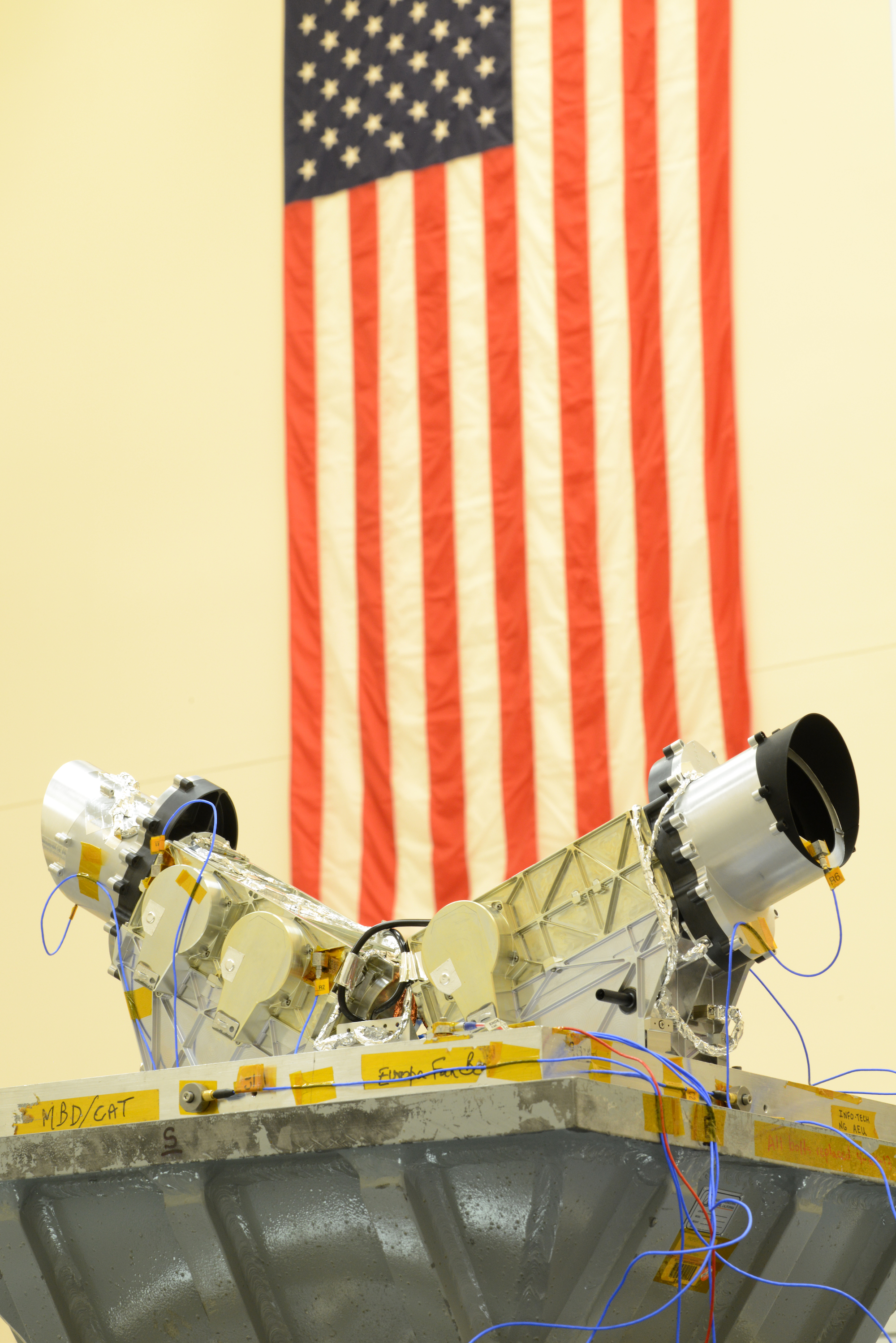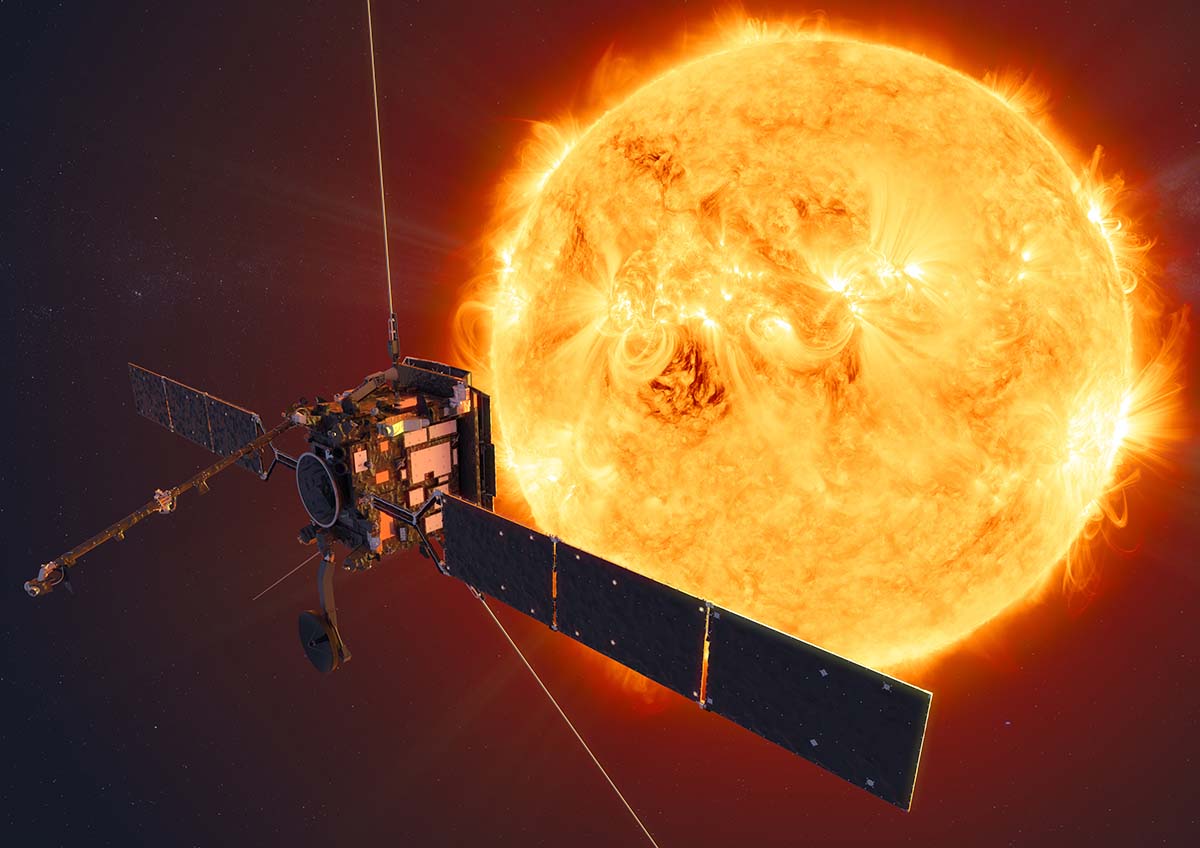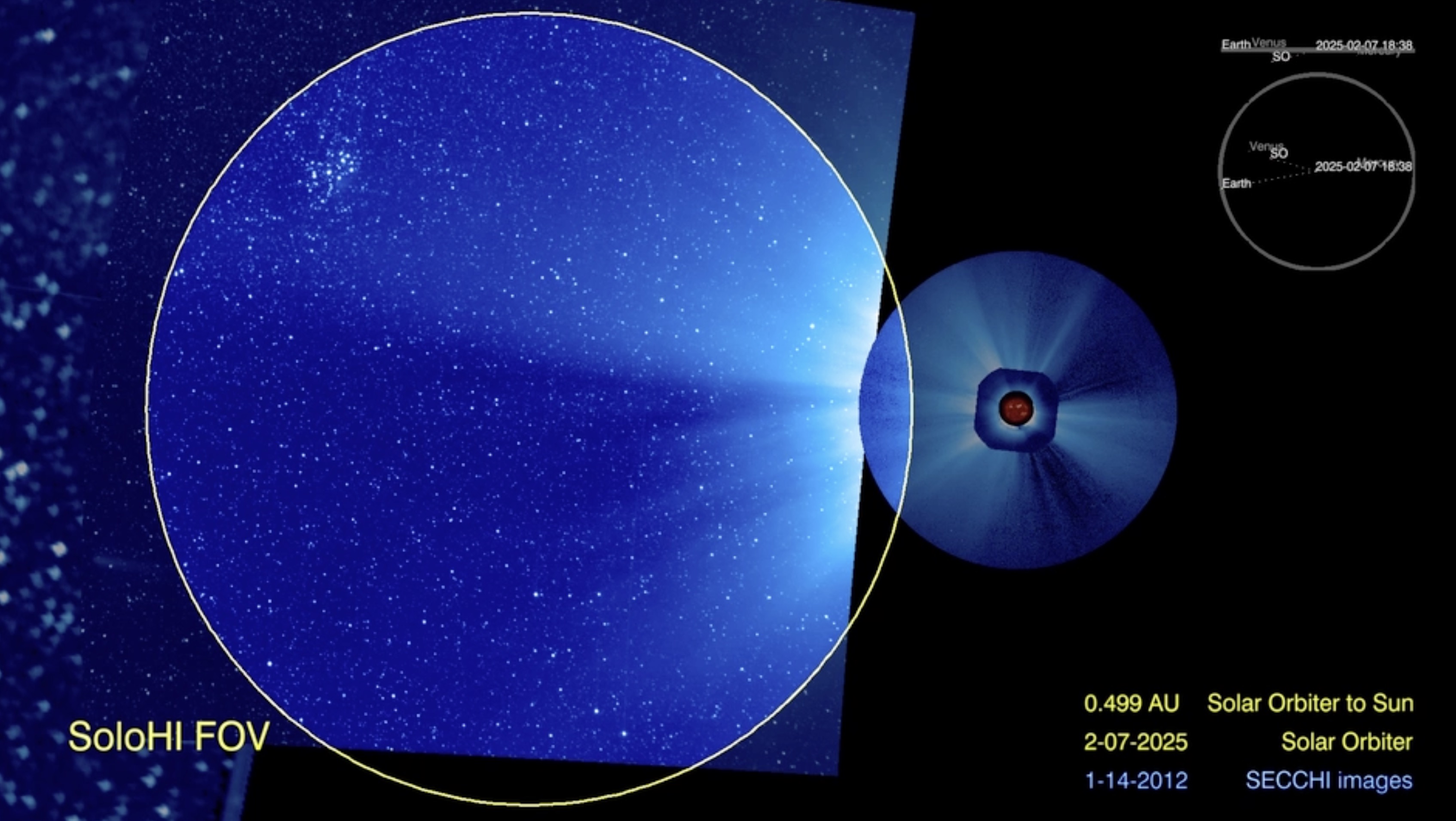Press Release
NASA, ESA’s Solar Orbiter Set to Explore Sun with Johns Hopkins APL-Developed Camera and Particle Detector
NASA and the European Space Agency’s jointly led Solar Orbiter mission is scheduled for launch Feb. 9 from Cape Canaveral Air Force Station, Florida — and riding aboard it will be a high-energy particle detector developed by the Johns Hopkins Applied Physics Laboratory (APL) in Laurel, Maryland, as well as a high-tech camera that APL contributed science support in developing.
The Solar Orbiter mission aims to study how the Sun creates and controls the heliosphere, an 11-billion-mile-wide protective bubble of charged particles and magnetic field lines surrounding the solar system. Orbiting as close as a quarter of the distance between Earth and the Sun, the spacecraft will create a one-of-a-kind, comprehensive picture of the Sun’s atmosphere and inner workings, and how they can affect the space environment farther out in the solar system.
It will capture the highest-resolution images of the Sun’s face ever taken, gather measurements in the spacecraft’s environment and use Earth’s and Venus’ gravity to slingshot it out of the ecliptic plane to image the Sun’s poles, which have never been viewed before. From there, the spacecraft will sweep up new information on explosive flares and coronal mass ejections that propel particles from the Sun’s surface at nearly the speed of light, which can threaten astronauts and space-based technologies, and capture images and measurements to help researchers deduce what creates the Sun’s powerful magnetic field.

Credit: Johns Hopkins APL
These data will complement the APL-led Parker Solar Probe, launched by NASA in 2018 to study the Sun’s atmosphere and solar wind. With Parker’s up-close view — ultimately within 4 million miles of the Sun’s surface — and various conjunctions of the two spacecraft to provide multiple vantage points of the same magnetic field lines and flow of materials from the Sun, the missions will combine to provide a never-before-seen global view of our star.
Included in Solar Orbiter’s comprehensive suite of instruments is the Suprathermal Ion Spectrograph, or SIS. Designed and built at APL, SIS is one of four sensors in an instrument suite that will determine the composition of energetic electrons, protons and heavy ions flooding from the Sun. SIS is a highly sensitive mass spectrometer that can determine elements from helium to iron by measuring how long it takes a particle to fly through the instrument.
“We care about particle composition because it’s a tracer of where they came from within the Sun,” said George Ho, a space physicist at APL and the principal investigator of SIS.
Although researchers already know the composition of the solar wind, Ho explained, solar events such as flares and coronal mass ejections can alter that composition. In the solar wind, for example, the ratio of helium isotopes — atoms of the same element whose mass differs only by their number of neutrons — can be as much as 1,000 times higher after certain types of explosive solar events.
“Only certain nuclear reactions and temperatures can produce those compositional changes,” Ho said, and because only certain regions of the Sun meet those conditions, scientists can then deduce where those particles came from.
SIS funnels particles through a series of three ultrathin foil sheets. Detectors signal when a particle passes through each foil, and SIS takes very precise measurements of the time between each signal to calculate how fast the particle was moving. From that information, the instrument can determine the particle’s mass, which tells what kind of element and isotope it is.
“APL pioneered measuring energetic particles in space,” Ho said, citing NASA’s Voyager 1 and 2 missions, launched in 1977, that carried a low-energy charged particle detector designed at APL.

